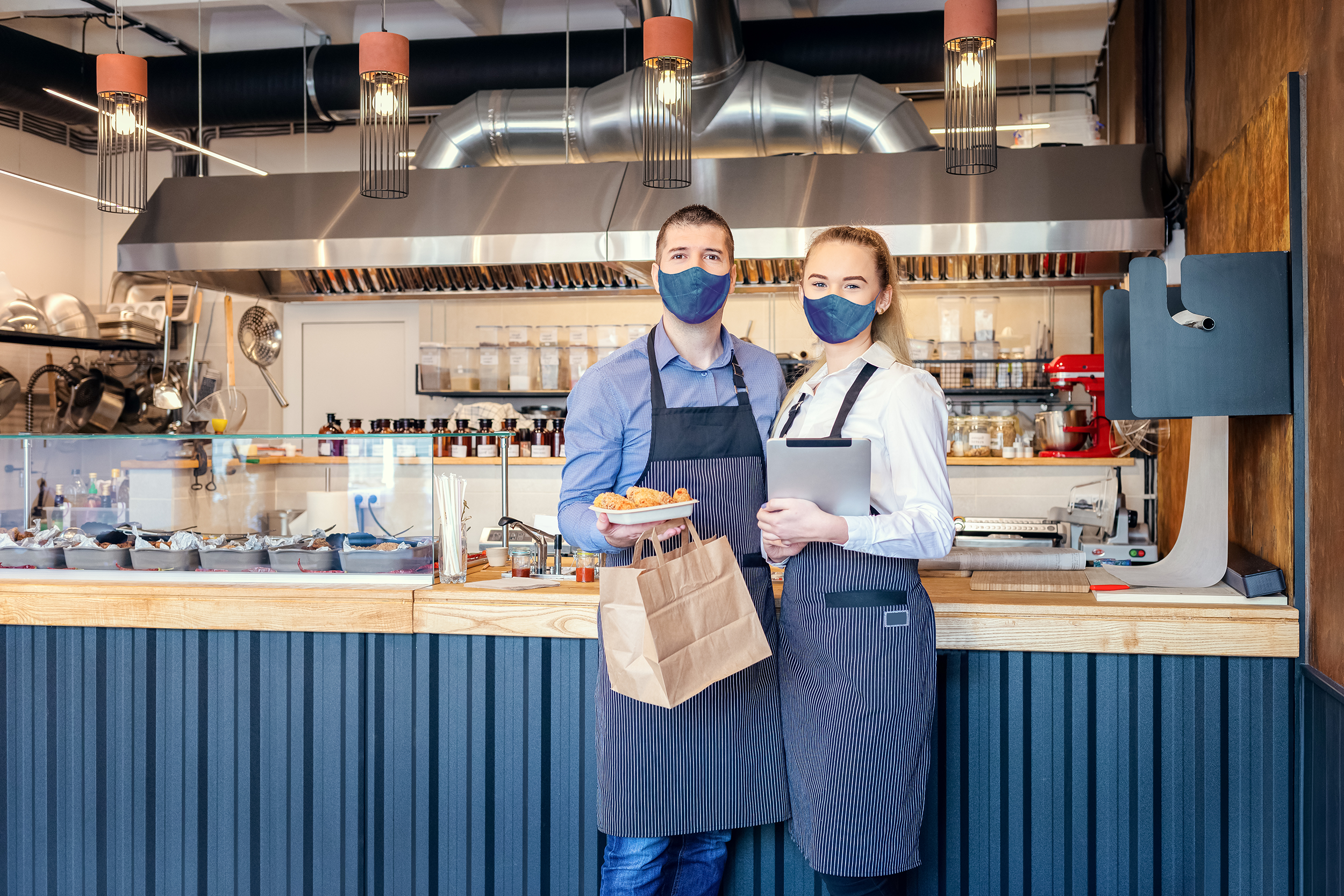Restaurant Reopening During Covid-19: Staff Training

With vaccination under way and warm weather coming, restaurants are now able to see the light on the road to recovery. After a year when gathering with friends and family and celebrating milestones at a restaurant wasn’t possible, customers have pent up demand - and savings - to be dining out en masse this summer.
Ahead of reopening during Covid-19, check with your local public health guidelines around any rules and restrictions for reopening such as permitted opening hours, guest count, policy on multiple households dining together, when to stop serving alcohol, etc.
While guests returning to your restaurant will be there because they feel confident, customers who feel safe will be more relaxed and have a more enjoyable dining experience. The experience customers have will in large part be based on the interactions with your staff. A positive experience will lead to higher tips and word of mouth referrals about the great experience they had at your restaurant.
However, staff may feel overwhelmed about returning to work. Hospitality jobs look very different now than they did in February 2020 and many require new skills. Staff feel ill prepared to handle new policies and procedures, even if they’ve worked for you before. This may prevent job seekers from applying for any restaurant jobs, or having former staff return to working for your business.
Training staff, and promoting your training program, is key to attracting and retaining staff in the restaurant industry right now. Below, we’ve outlined 8 key areas to focus on training staff for reopening during Covid-19.
1. Covid-19 protocols
To stay up-to-date on reopening in Canada, visit Restaurants Canada’s reopening tracker: https://info.restaurantscanada.org/reopening-tracker
In the US, find your local health department here to get more information: https://www.naccho.org/membership/lhd-directory
Outlining your Covid-19 protocols are not only important for staff, but also customers. Customers who see you are doing everything you can to keep staff safe and stop the spread of Covid-19 will have a more positive experience at your restaurant and will be more likely to drive word-of-mouth marketing.
Here are some of the common protocols to train your staff around Covid-19, however, check with your local public health authority for more information:
- Employee health checks
- Screen employees before their shift by asking them if they currently have any symptoms and if they have travelled or come into contact with someone with Covid-19
- Take staff temperature
- Customer health checks
- In addition to the above, consider posting signage stating that customers will be refused entry if they have symptoms of Covid-19 and alternative arrangements (such as curb side pickup) can be made
- Contact tracing
- If required, have a clipboard or online form for customers to complete all necessary contact information
- In required, request photo ID to confirm diners are from the same household
- Sanitation
- Clean and sanitize tables, menus, payment terminals, and condiments between each customer
- Mask policy
- Customers must wear masks when not seated at their table
- Distancing policy
- Patrons must be seated 2 metres (6 feet) apart
2. Health protocols
Proper hand washing and coughing techniques have always been important in the restaurant industry, but are even more important when reopening during Covid-19. Be sure to provide information and review these techniques with staff.
If staff have been out of work for a long period of time, the reopening training can also be a good opportunity to review other workplace protocols such as alcohol laws, heavy lifting, and chemical handling.
3. Menu training
It’s been common for restaurants to condense or change their menus during Covid-19. If this has happened at your restaurant, make sure to explain the key menu differences to staff so they can inform customers.
Customers may come in expecting a dish that you previously had on your menu. Make sure to train staff on the best alternatives to offer customers if this happens.
4. Uniform
If masks are mandatory for staff, be sure to specify in your job description if you provide them or if staff should (or can) bring their own. The same goes for face shields or any other PPE.
Restaurants with a drive thru may want to provide safety vests and radios for staff. If these items will be shared, be sure to train staff on the proper sanitation and sign out procedures.
5. Managing deliveries
Takeout services have boomed during Covid-19, with restaurants setting up their own service or signing up for third party delivery. While many customers will be excited to return to indoor dining, there are some who will be hesitant, and keeping delivery channels open for these customers will be important for business going forward.
However, restaurants will now have a busy front of house area. While indoor dining was closed, having delivery drivers and customers picking up orders in the front of house was likely pretty straightforward for your and your staff. However, with guests now entering the restaurant who want to be seated, in addition to delivery drivers and customers picking up, it will be important to train staff on how to handle this. Who takes priority? How will you ensure each customer or driver picks up the correct order?
If your delivery services aren’t integrated with your point-of-sale software, you’ll also need to train your staff on how to input them.
For restaurants that may wish to keep their indoor dining experience separate from delivery, consider setting up a ghost kitchen location that only prepares orders for delivery.
6. Mental health
A year of constantly changing protocols have been tough on staff and hopefully moving forward, restrictions won’t be going back into lockdown.
Outline in your job description how you are supporting your staff, so applicants know what to expect. Initiatives like a “one word check-in” at the start of each shift to see how staff are feeling, or setting up a mental health box for anonymous check-ins, are small things that go a long way to employee satisfaction.
Staff who feel supported and appreciated will stay with your business as an employee for longer. While staff shouldn’t be hugging or high-fiving right now, try to find other ways to keep employee morale high. Even simple initiatives like letting a staff member choose the music for their shift can go a long way.
7. Liquor laws
There have been many changes to liquor laws in the past year, especially in regards to alcohol delivery. Make sure your staff are up-to-date on these policies so alcohol is sold, packaged and delivered in accordance with your local laws.
If staff are new, be sure they have completed the appropriate required government training or licensing so they can legally handle alcohol in your state, province, or territory.
8. Sick policy
Make sure you clearly communicate the policy on what staff should do if they, or someone they have come in close contact with, becomes infected with Covid-19.
If you offer sick days, be sure to outline this in your job description. Are they paid or unpaid? How many do staff have access to?
If staff are sick, you don’t want to end up short staffed. During reopening training, be sure to outline your shift swap policy and explain to staff how they can swap shifts.
After you’ve determined what to include in your staff training for reopening during Covid-19, be sure to add the necessary policies and procedures to your handbook during staff onboarding. For anything that can’t be addressed in the manual, add those items to your training program.
Final thoughts
Establishing a staff training program is key to a great onboarding process, with staff who feel supported and confident on the job being more likely to stay with the company. While reopening during Covid-19 involves a lot more time and effort, consumers who have pent up demand and savings will be excited to return to your restaurant.
Test

"Being able to depend on a consistent stream of applications without having to devote hours a week to recycling the same posts has revolutionized our HR workflow, saving me hours of labor."
Book a demo
We'll contact you as soon as possible to better understand how we can help you
